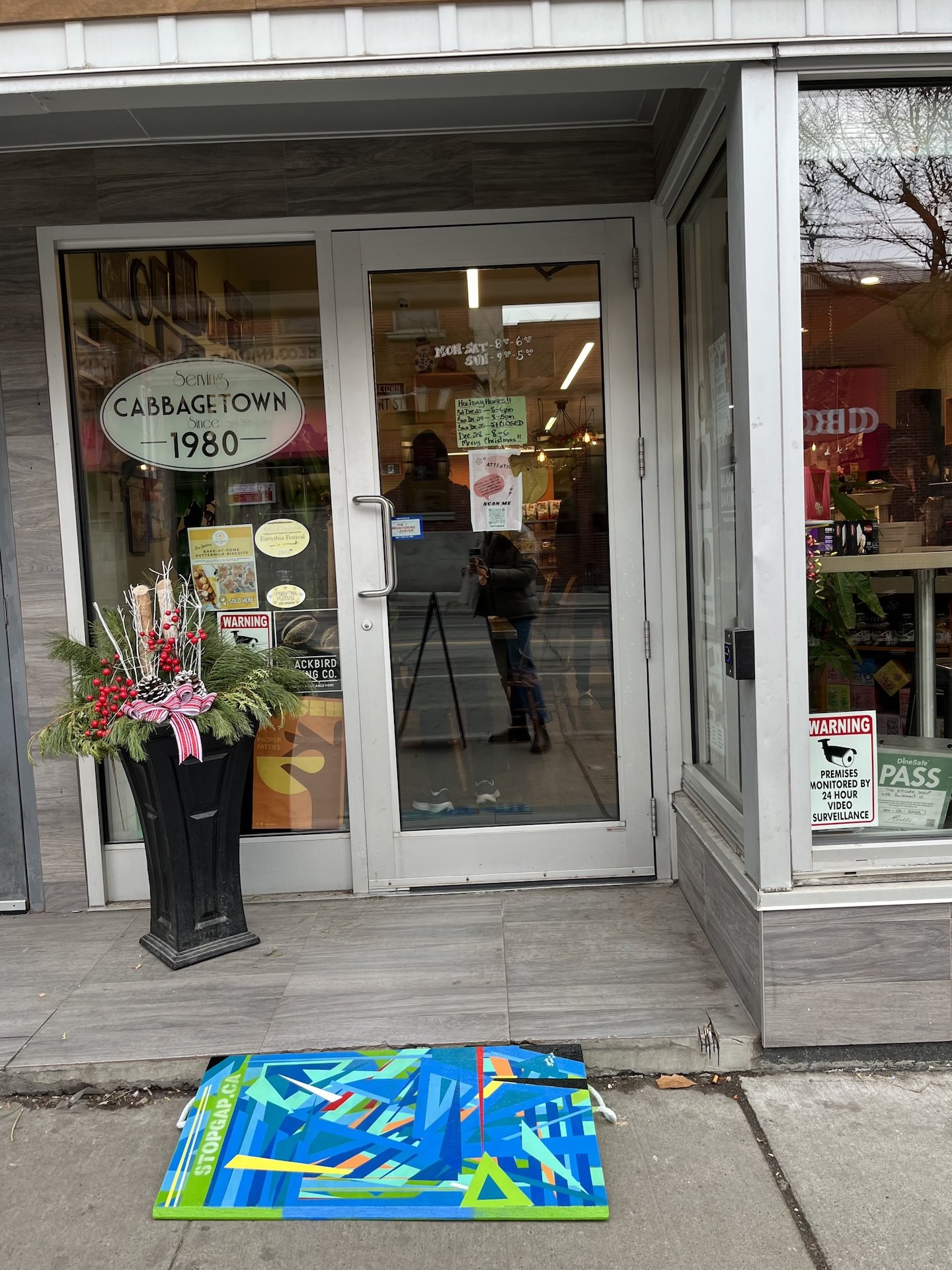STEPS Accessibility Art Project and Placemaking Toolkit
The Accessible Art and Placemaking Project explores the ways art can be used to make public spaces accessible to people of all abilities. The project involves the review of existing research and consultation with d/Deaf and Disabled experts active in the arts and urban planning communities.
Using these learnings, STEPS developed two public art pilot projects in two downtown Toronto neighbourhoods, one in partnership with in partnership with the Cabbagetown Business Improvement Area (BIA) and StopGap. Artists living with disabilities animated ramps for accessible entry into local businesses and storefronts. The vibrant artwork can be widely seen along the streets that cue as a reminder of the importance of accessibility within our communities.
Artist panels were installed at each location with QR codes for passersby to scan and listen to hear about the artwork and different lived experiences of the artists through audio tracks, curated by multi-disciplinary artist Tristan Whiston. You can access the audio stories by scanning the QR codes at the location of the ramps or via the STEPS App (linked below):
We Are Here by Amanda Lederle (195 Carlton Street, Toronto)
[dis]Ability by Gloria Swain (473 Parliament Street, Toronto)
The Light of Love, Hope and Peace by Wendy Lu (461 Parliament Street, Toronto)
The audio tracks can also be heard through the YouTube Playlist (or by playing the videos below).
Sincerest thanks to the artists Amanda Lederle, Gloria Swain, Wendy Lu, and Tristan Whiston for their important contributions to this accessible art pilot project.
The final phase is the publication of a report and toolkit that can be used when planning public art and placemaking projects. Now published with the support of The Cabbagetown BIA, the STEPS Accessible Art and Placemaking Toolkit can help support city builders in making public spaces more accessible through art and cultural programs.



